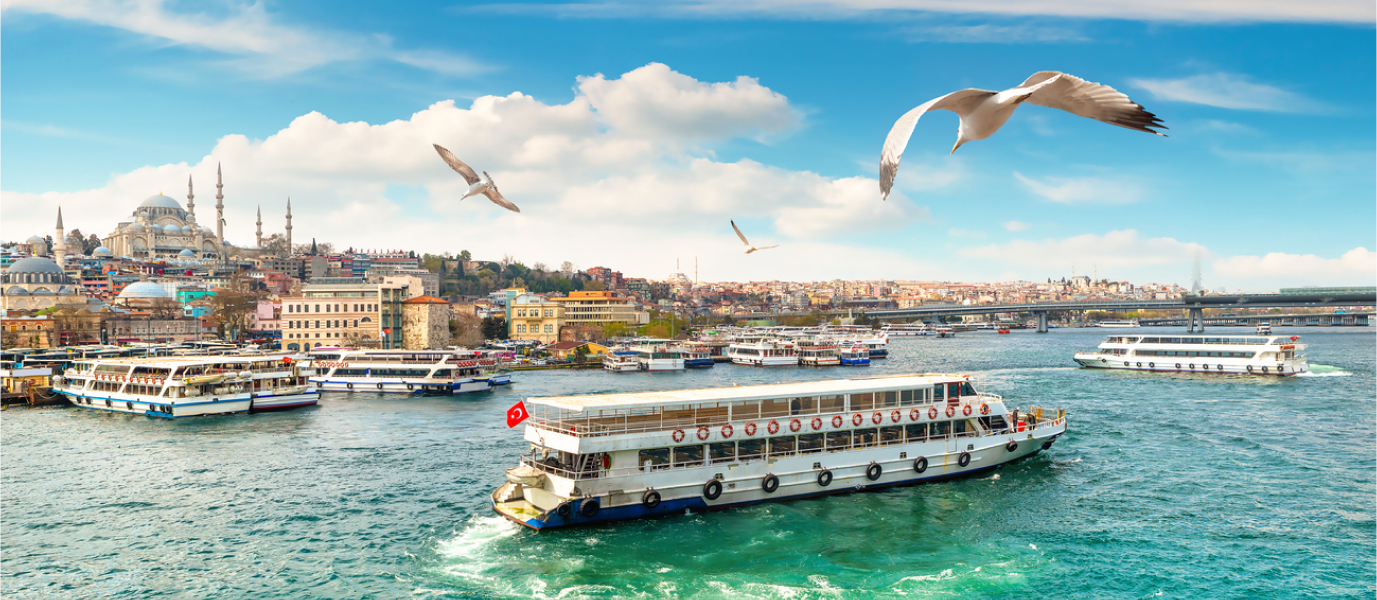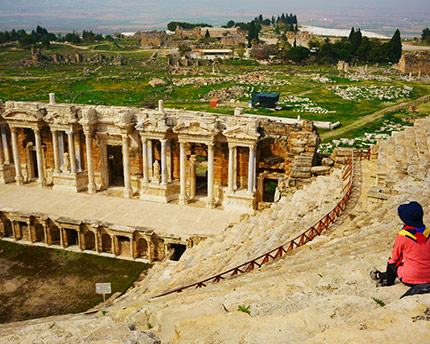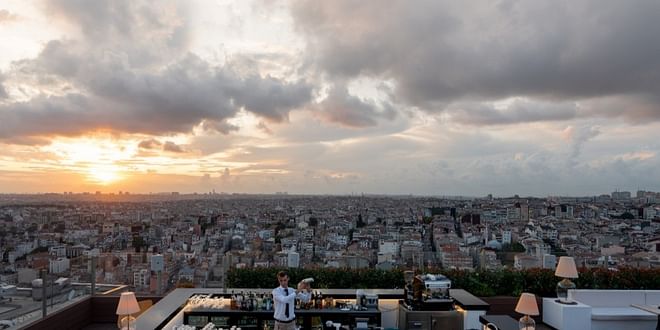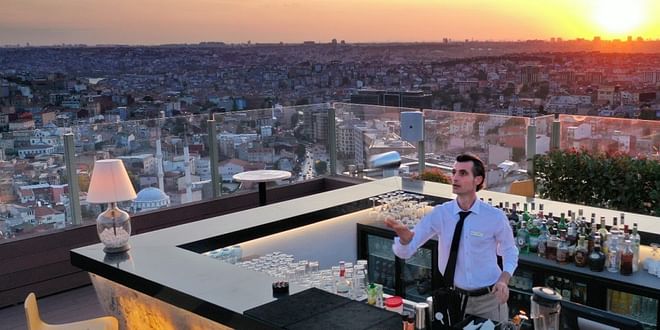One of the most exciting things you can do in Istanbul is take a cruise along the Bosphorus, the 32-kilometre natural strait that splits the city in two to connect the Black Sea with the Sea of Marmara. The geographical location of this waterway is the reason why Istanbul is the most famous example of a transcontinental city – in other words, a city that spans more than one continent. Your cruise will take you between the Asian bank on one side and the European bank on the other, each separated by a mere 700 metres. Along the way, you’ll discover some of the most important monuments in Istanbul: colossal bridges, sumptuous 19th-century palaces, elaborate gardens, charming riverside villages and more. Read on for our guide to cruising the Bosphorus.
The importance of the Bosphorus
The name of this channel comes from the ancient Greek for ‘passage of the cow’. In Greek mythology it refers to the place where one of Zeus’ many lovers, transformed into a cow, waded across while trying to escape from Hera (Zeus’ wife). Mythology aside, to really get the most out of your cruise along the Bosphorus, you first need to know about its place in history and its geographical importance. In the past, this natural trade route between Europe and Asia Minor was the focal point of conflicts between different civilisations and empires. Nowadays, the Bosphorus is one more major artery in Istanbul. Millions of people use its enormous bridges on a daily basis.
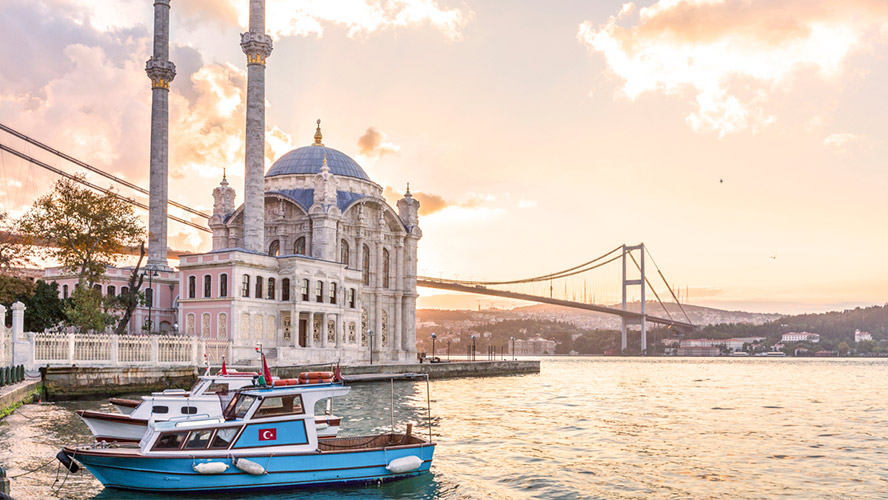
Cruise options
‘“Life can’t be all that bad”, I’d think from time to time. “Whatever happens, I can always take a long walk along the Bosphorus”’. So said the Turkish writer Orhan Pamuk, born in Istanbul and winner of the 2006 Nobel Prize in Literature. This philosophy is perhaps the best description of the experience of cruising along the strait.
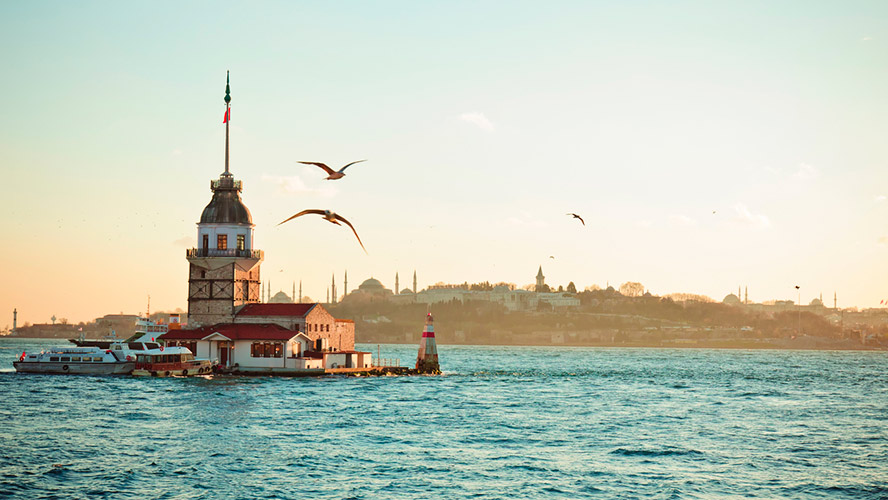
To help you choose the best option for you, it’s worthwhile knowing the different types of cruise available:
- Short tour: Around 1.5 hr with tickets costing around 10 euros. This type of cruise enables you to contemplate some of the most important monuments along both banks of the Bosphorus, all without leaving the boat.
- Long tour: This excursion lasts around 6 hours and you can disembark at several locations. It includes a 3-hr stop in Anadolu Kavagi, the last village before the strait opens out into the Black Sea.
- Tour + dinner: Only available in the evenings. This type of cruise is undoubtedly the most comfortable and romantic of all the options. You’ll enjoy a traditional Turkish dinner along with folk dancing performances and unlimited drinks. Usually available from early-June to mid-September.
Tourist attractions
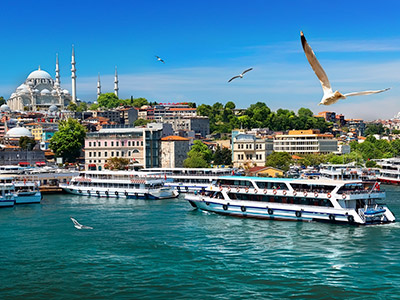
One of the best things about cruising the Bosphorus are the vast number of monuments and villages along its banks. As you travel along the waterway towards the Black Sea, you’ll get an idea of the extent to which the banks were used by various civilisations and cultures throughout time.
The first great monument that jumps into view, shortly after leaving the Eminönü docks, is Dolmabahçe Palace. This huge European-style palace complex was built in the mid-19th century. The first president of the Republic of Turkey, Atatürk, died there in 1938. As the cruise continues you’ll start to make out the Ortaköy Mosque, Beylerbeyi Palace, and in the background the impressive Fatih Sultan Mehmet suspension bridge (the fourth longest in Europe).
A little further along, once Istanbul starts to grow small in distance, is the beautiful and decadent Rumeli Hisari. This Ottoman fortress was built a year before Constantinople was sieged by the armies of Sultan Mehmed ‘The Conquerer’. Sited nearby are some famous yalis or summer palaces, among them Köprülü and Ethem Pertev in the settlement of Kanlica, and Jedive in the village of Çubuklu.
Shortly before you reach the mouth of the Black Sea, the cruise will stop in at the strongholds of Rumeli Kavagi and Anadolu Kavagi, each brimming with interesting Byzantine heritage. In the first, you can visit Imros Castle and enjoy a fantastic meal in one of the restaurants in the charming port. In the second, the Anatolian Castle stands atop a hill overlooking the entrance to the strait from the Black Sea.





























































